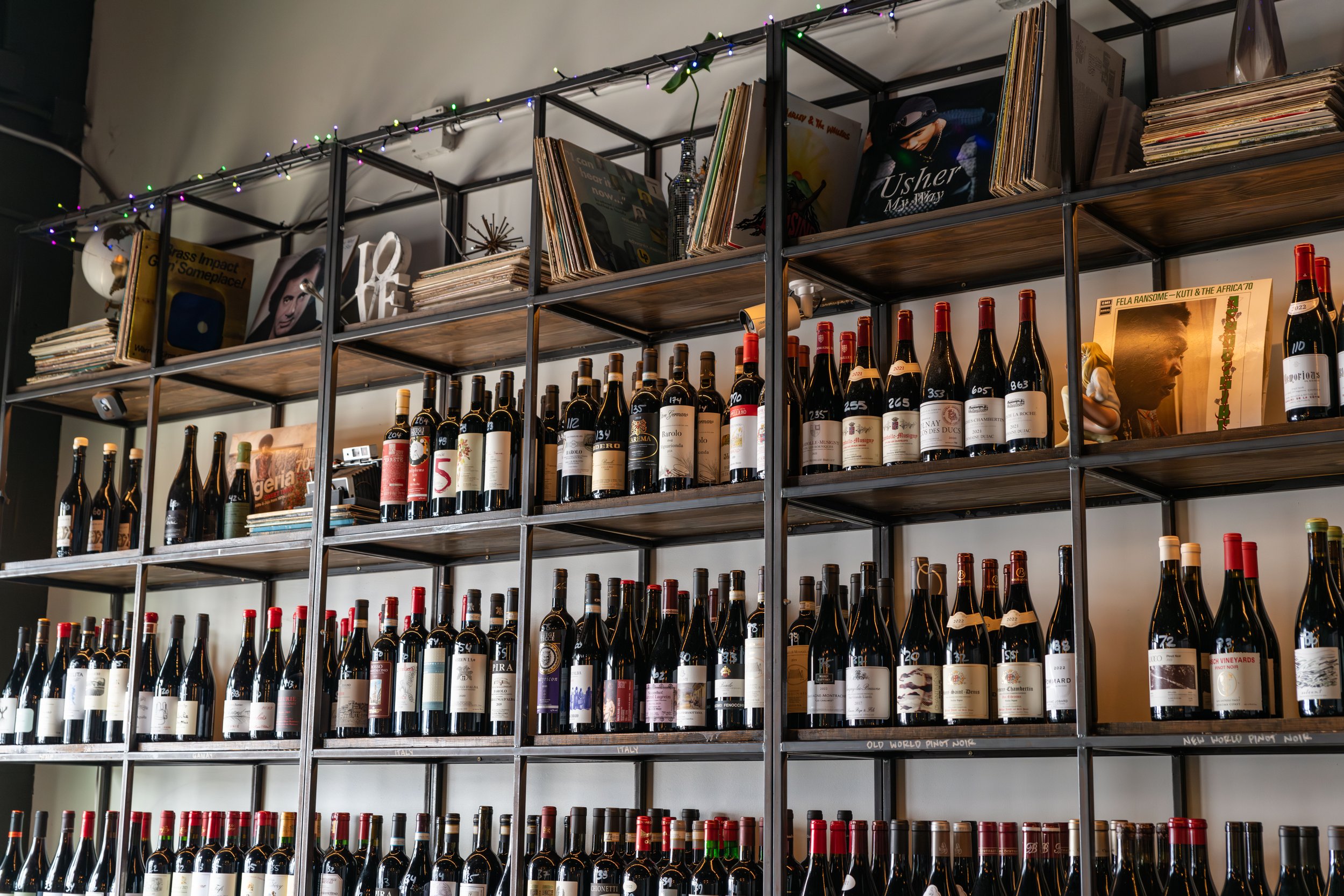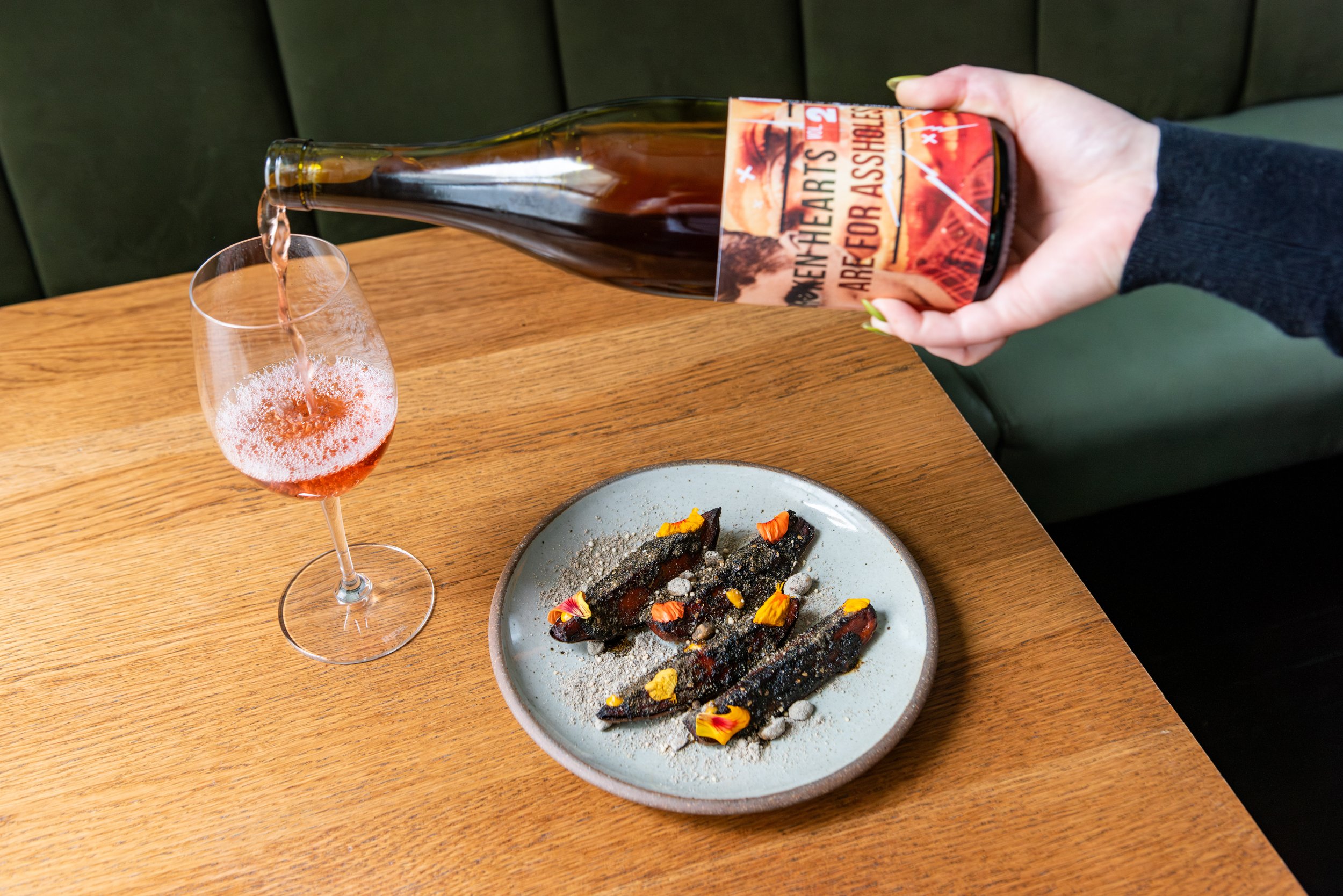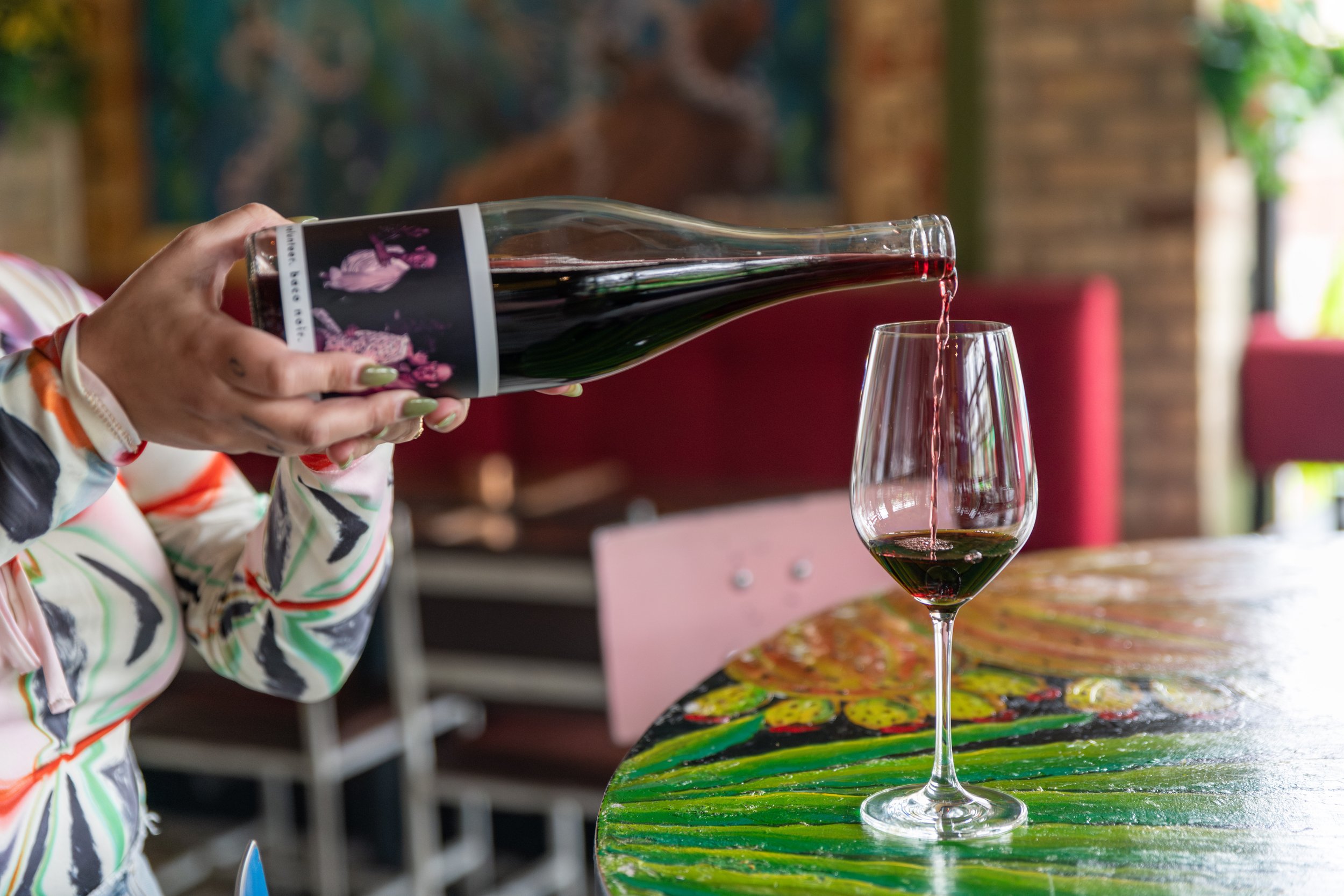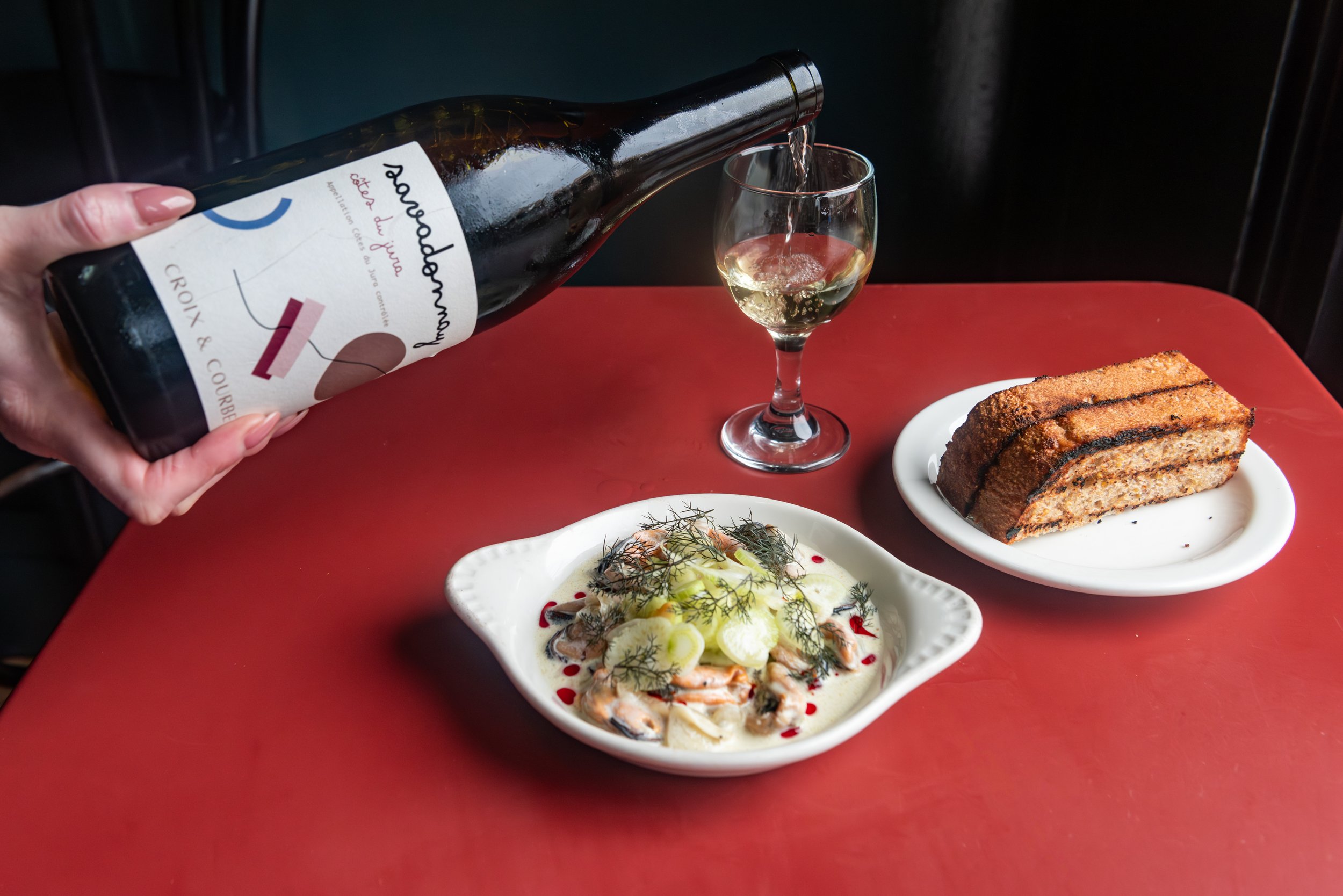Hop Alley, Uncorked
Sommelier Jacob Roadhouse explains how to look at the dishes from Denver Chinese restaurant, Hop Alley, through tinto-colored glasses.
While there are ups and downs to being a one man show, Sommelier Jacob Roadhouse is not only owning it, but having a ton of fun doing it. While his job and focus stays on building a wine list that can complement Hop Alley's unrestrained Chinese menu, while highlighting underrated and upcoming regions, he's still getting to explore his own curiosities without having to answer to anyone. Hear it from the man himself—Roadhouse exuberantly pairs four wines with four Hop Alley classics, sharing why they work so well, and why you should look at Chinese dining with tinto-colored glasses.
Gamay, Jean-Louis Dutraive, Fleurie Lieu-Dit Champagne, Beaujolais, France, 2009 paired with Crispy Turnip Cakes, Lap Cheong Sausage, Shrimp, Black Garlic Sauce, Pickled Turnips, and Turnip Green Relish
“It’s difficult to do one-to-one coursed pairings in a family-style format, so for [reds], I try to lean on wines that have a lot of acidity, freshness, and crunch that can pair with a wide range of dishes. In this dish, there are four different savory components: The crispy turnip cake, shrimp paste, lap cheong, and black garlic puree. With a dark fruit core, this wine is less-so tutti frutti, but still has plenty of snap and crunch. It has a lot of energy and lift that can cut through the savoriness without losing itself. And it’s seductive, with an almost five-spice savory component. On top of all of that, this producer is great, hitting all the stuff I look for in a wine: it’s biodynamic, no sulfur, so the result is a clean, beautiful wine that I wouldn't necessarily consider natural, but happens to be natural.”
Chardonnay, Marc Soyard, Domaine de la Cras, Burgundy, France, 2019 paired with Pork Belly, Congee, Lemon, White Pepper, Watercress, and Red Onion
“This is chardonnay for people who think they don’t like chardonnay. Marc Soyard has a 160-hectare farm, using only eight acres for chardonnay and pinot noir production. What I love about his chardonnay is that they don’t lean into the creamy, fat-style. They have more of a kiss of smoke and sea salt. With depth and texture, it can stand up to the fattiness of pork belly, but with enough acidity to cut through the weight and a cool peppery, leafy, herby quality to it that really makes the watercress pop.”
Red Blend, Château Massereau, “Cuvee K,” Bordeaux Superieur, France, 2009 paired with Braised Short Rib, Tofu Skin, Chee Hou Sauce, and Bok Choy
“I think Bordeaux has been so uncool that it's maybe getting cool again. There are a lot of reasons why Bordeaux is behind most other areas of France when it comes to organic vehicles. In the broad, general sense, it's a conservative region — a reason I have stayed away from it. BUT, there are some really cool producers and this happens to be one of them working organically, making a really honest wine with structure and weight. This wine itself is super cool. It's savory, it has age, it’s not overly oaked, so it works with a wide range of the menu. Finding this was like whoa, we really like it and want to keep it around forever. It’s a straightforward pairing; a fatty cut of meat with a big red wine. The dish uses fermented plum sauce, so pairing it with a darker, plummy wine was the idea.”
Chenin Blanc, Clos des Plantes, “Whaka Piripiri Mai,” Anjou, France, 2020 paired with La Zi Ji: Fried Chicken Thigh, Szechuan Chiles, and Scallion
“This is a weird chenin blanc for people who are really into chenin blancs. When you smell it, it's really tropical. But on the palate, it’s all white tea, citrus oil, and papaya. There are very few grapes that do the whole spicy, salty, sweet, bitter thing all at the same time, and because of that delivery, it works so well with spice. It doesn't have actual sugar, but it gives the perception of sugar. and a dense mid-palate richness that is very cool. So ideally, it is going to chill out the Szechuan pepper in the La Zi Ji.”










Tips on building a wine list that works for everyone from Sommelier Thibaut Idenn of Alla Vita and Boka